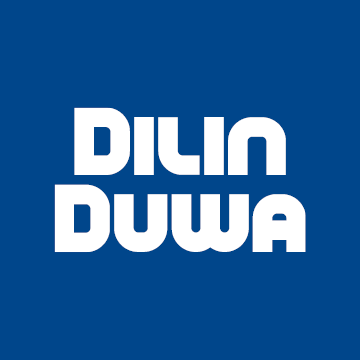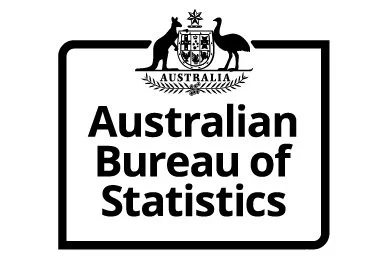
Indigenous Economic Power Project
Indigenous Economic Power Project
Australian businesses are recorded in multiple registries, starting with Commonwealth business registries under the Commonwealth Registries Act 2020. Until recently, research analysis of Australian businesses has been limited by the kind of data available. The release of the Business Longitudinal Analysis Data Environment, or BLADE, in recent years has advanced the data infrastructure for analysis of Australian businesses, benefiting our collective understanding of the economy.
BLADE is an expansive collection of anonymised business data from administrative and survey sources compiled by the Commonwealth through the Australian Bureau of Statistics (ABS), Australian Taxation Office (ATO), Department of Industry, Science and Resources, and IP Australia. Most important for the purposes of this study is longitudinal financial data on all businesses that are required to report to the ATO. Research based on this data provides insights that help industry and government identify opportunities and challenges across the business community that can shape policy and practice to support growth.
Yet, these benefits are not afforded to the Indigenous business sector because there is no identifier of Indigenous ownership.
Objective of the Project
The objective of the Indigenous Economic Power project is to fix this problem and to quantify the economic, employment and social contribution of Indigenous businesses. Dilin Duwa is committed to continuing our collaborations with Indigenous business data custodians and the ABS to collectively develop greater data richness. We look forward to ongoing dialogue with many more Indigenous business data custodians invested in the development and growth of the sector. The nature of establishment, collection and governance of these lists are very different in nature, and as such we are treating this Snapshot Study as a descriptive report on each registry.
Indigenous Economic Power Project Snapshot 2.0
-
Registries
The five Indigenous business and corporation registries we case study this year are: the Melbourne Business School’s MURRA Indigenous Business Master Class Alumni list; Industry Capability Network Limited Gateway; Department of Jobs, Precincts and Regions Victorian Aboriginal Business Directory; Waalitj Foundation Aboriginal business list and the Office for the Registrar of Indigenous Corporations (ORIC) registry.
-
Data and Report
The report analyses the makeup of the registries, utilising registry and ABS BLADE data to illuminate their composition and financial indicators. The report deep dives into each registry to discuss the financial performance of businesses in each registry in comparison with the industry performance.
-
Findings and Outcomes
The report analyses; How many businesses were linked and active in the ABS BLADE data environment; What industry sectors are most prevalent; Average turnover and average employment numbers; The association between corporations and businesses; Business structure of the businesses and corporations, and Average financial performance ratios to demonstrate the financial health and viability of Indigenous businesses and corporations.
Research FAQs
Research based on this data provides insights that help industry and government identify opportunities and challenges across the business community that can shape policy and practice to support growth. Yet, these benefits are not afforded the Indigenous business sector because there is no identifier of Indigenous ownership.
The report examines the relationship between the presence of Indigenous corporations and the rate of Indigenous business ownership within local business communities as a first step in understanding the contribution of corporations to Indigenous business development.
The chosen financial measures are based mainly on ratios first produced by Altman (1968) that are derived from profit and loss and balance sheet information and have been shown to predict actual business failure (see for example Kenney et al. 2016 and Altman et al. 2017).
These measures are:
Debt-to-asset Ratio | Debt-servicing Ratio | Return on Assets | Current Ratio | Asset turn over ratio | Capital expenditureAs such, they can be considered early indicators of financial hardship that may be used to flag groups of businesses that are at risk of collapse. These measures are important to be able to monitor performance of the sector, especially groups of businesses that might be at greater financial risk, such as start-ups and small businesses, which can enable better targeting of business support.
Financial ratios presented in the report suggest that Indigenous businesses on these registries appear well-established and secure. Across all registries, when compared to peers in the same industry, businesses are, on average, middle-performing and have remained at this mark since at least 2006.
Another key insight into the registries is that they report higher rates of capital expenditure than their peers in the same industries. It is not an aberration, but an observation made every year since 2006 across all registries.
For small corporations, having more of them is associated with a higher prevalence of Indigenous-registered businesses in communities. On average, an extra 10 corporations is associated with an extra 5 Indigenous registered businesses per 10,000.
The current ratio of integrated ORIC corporations consistently ranks around the 70th percentile, suggesting that these businesses have a stronger 12-month capacity to pay short-term debts than their peers. Importantly, we also see a relatively high asset turnover ratio, which suggests that their higher current ratio is due to their ability to generate cash and receivables through sales, rather than an inability to collect debts or use cash on their balance sheet productively.
Integrated ORIC corporations are financially more conservative than most of their peers in the same industries — they consistently appear between the 30th and 40th percentile on the debt-to-asset ratio.
From analysis presented in this study, we conclude that over the period of analysis (2006-2020), Indigenous businesses on these registries appear to have performed well financially, at around the middle of the industries that they operate in.
An interesting finding from this study is that Indigenous businesses across all registries, including ORIC corporations, are on average more likely to report making capital expenditure in business activity statements than their peers in the same industries. Not just in 2020, but in all years of the data.
We find that in communities where there is a strong presence of ORIC corporations, the rate of Indigenous-owned businesses within the local business sector is higher.
We aim to bring all anonymised registry data together alongside a comprehensive database of all Indigenous-owned (but not necessarily verified) businesses. Such data is vital for three reasons:
First, its creation will help shed light on the parts of the sector that choose to remain invisible, the types of businesses that remain invisible and their motivations for remaining invisible.
Second, having more comprehensive data will allow us to measure, for the first time, the contribution of the Indigenous sector to local, state and national economies and in creating new employment and economic opportunities for Aboriginal and Torres Strait Islander peoples.
Third, a more comprehensive database will allow us to better able to track the financial performance of specific parts of the sector that might be facing financial hardship, such as start-ups or specific sectors, as part of our annual snapshot study. Such knowledge can better-target support in a timely way.









